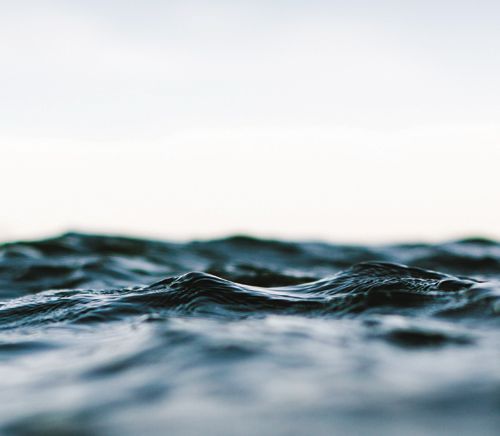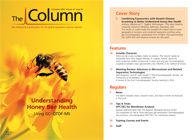GC–MS Analysis of Marine Organotin Pollution
The ban on organotins has not led to a significant reduction in marine pollution according to research published by the Polish Academy of Sciences. Researchers found unacceptable levels of harmful organotins in the muscle and liver tissues of fish species collected in the southern Baltic Sea coastal zone, exceeding the good environmental status boundaries.
Photo Credit: adamBHB/Getty Images

The ban on organotins (OTs) has not led to a significant reduction in marine pollution according to research published by the Polish Academy of Sciences (1). Researchers found unacceptable levels of harmful organotins in the muscle and liver tissues of fish species collected in the southern Baltic Sea coastal zone, exceeding the good environmental status (GES) boundaries.
Organotins have been used for decades in anti-fouling coatings intended to prevent the settlement and growth of aquatic organisms on structures such as ship hulls, fish cages, and oil rig supports. However, a spate of studies highlighting the toxic effects of OTs on the wider marine environment has led to a reassessment of their use. In particular, OTs such as tributylin (TBT) and triphenyltin (TPhT) were found to disrupt the endocrine system of organisms, resulting in sterility and species extinction (2,3).
After considerable legislative debate, the International Convention on the Control of Harmful Anti-fouling Systems on Ships (AFS Convention) came into force on the 17 September 2008 globally (4). European Union (EU) flagged ships and ports complied with the convention requirements from July 2003 (5). The convention aimed to ban the application of organotin anti-fouling paints on ships in the hope of reducing OT contamination levels.
To assess the success of this ban researchers collected fish samples from three different marine environments along the Baltic Sea. The Gulf of Gdansk, known for large international seaports, marine traffic, and large scale shipyard activity, the Vistule Lagoon, dominated by freshwater flora and fauna with fishing harbours and marinas, and the Szczecin Lagoon, a key point in the Odra River Estuary and acts as a “biological filter” for river waters and the city of Szczecin.
Muscle and liver tissues from the fish species were subjected to sonication extraction, followed by derivatization. Samples were purified before extracts were injected into a gas chromatographic system coupled with a mass spectrometric detector (GC–MS). Organotin concentrations were determined on the basis of response factors derived from daily repeated injections of a standard mixture of derivatized compounds (CHIRON).
Results indicated that in the six to seven years since the total ban was fully implemented concentrations of butyltins (BTs) in fish muscles and livers have remained high in comparison to pre-ban concentrations. TBT samples exceeded GES boundaries recommended in the HELCOM (Baltic Marine Environment Protection Commission) CORESET for TBT in seafood.
The presence of OTs is not surprising as they are known to reside in sediments for years and not degrade (6,7), however, these results highlight the importance of continued studies into the subject and the authors recommend that OTs continue to be monitored in marine environments because of the threat butyltins can pose to marine life.GC–MS Analysis of Marine Organotin Pollution
References
- Filipkowska et al., Mar. Pollut. Bull. (in press) http://dx.doi.org/10.1016/j.marpolbul.2016.06.052
- C. Alzieu, Ocean Coast. Manag.40, 23–36 (1998).
- M. Hoch, Appl. Geochem. 16, 719–743 (2001).
- International Maritime Organization (IMO), International Convention on the Control of Harmful Anti-fouling Systems on Ships (2001).
- European Union (EU), Off. J. Eur. UnionL115/1 (2003).
- P.H. Dowson, J.M.Bubb, and J.N. Lester, Estuar. Coast. Shelf Sci. 42, 551–562 (1996).
- I. Takahashi et al., Mar. Environ. Res. 57, 397–414 (2004).

Altering Capillary Gas Chromatography Systems Using Silicon Pneumatic Microvalves
May 5th 2025Many multi-column gas chromatography systems use two-position multi-port switching valves, which can suffer from delays in valve switching. Shimadzu researchers aimed to create a new sampling and switching module for these systems.
Studying Cyclodextrins with UHPLC-MS/MS
May 5th 2025Saba Aslani from the University of Texas at Arlington spoke to LCGC International about a collaborative project with Northwestern University, the University of Hong Kong, and BioTools, Inc., investigating mirror-image cyclodextrins using ultra-high performance liquid chromatography–tandem mass spectrometry (UHPLC–MS/MS) and vibrational circular dichroism (VCD).

.png&w=3840&q=75)

.png&w=3840&q=75)



.png&w=3840&q=75)



.png&w=3840&q=75)









